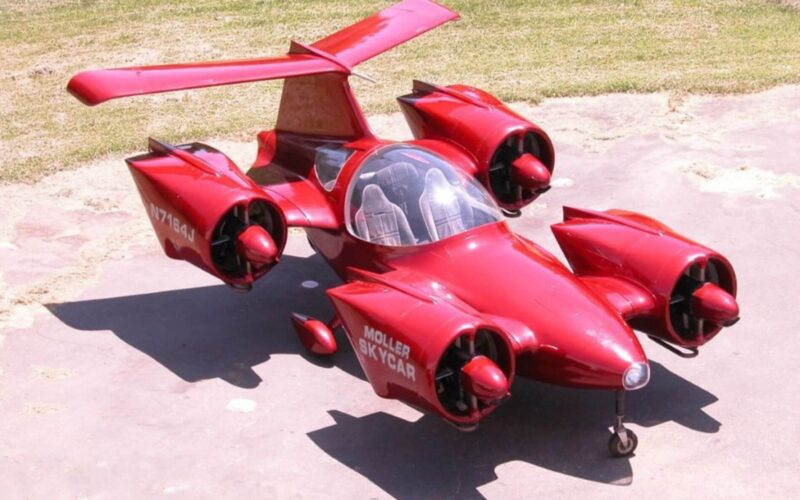Aerospace has several cutting edge topics that tend to appear every now and then to astonish us with a dose of crazy futurism. Real, marketable space tourism is about to start happening. Supersonic commercial aircraft are on the verge of becoming a reality again. And what about flying cars? Turns out, a lot of optimism can be found there, but even more questions remain.
There are over 100 companies in various stages of developing, testing and certifying their designs for a flying car, some large, some small, some reputable, others less so. A recent study by UK comparison service Uswitch tried to collect available information about such projects and find out some common trends, making sense of the emerging market.
Their findings are nothing but optimistic. This new kind of transportation will not be out of reach for an average consumer. The cheapest flying car in development, Samson Switchblade, is advertised to cost $120,000 – as the study puts it, the price of high-end Porsche, or a bit cheaper than your average used Cessna 172.
The cost of using such a vehicle on a sharing basis is also approachable for an average citizen, as Uber’s Elevate flying taxi service is expected to cost $5.73 per mile, just a bit more than a London taxi. Furthermore, a little number crunching reveals that almost half of active flying car companies are currently in the process of building their prototypes, and a third – including both Switchblade and Elevate – have passed that stage and started flight testing.
All this activity and a sheer number of companies attempting to provide similar products resulted in an extremely positive outlook for the industry. According to the projection by Morgan Stanley, made in early 2019’s pre-pandemic climate and quoted in Uswitch’s paper, the flying car market would reach over $1.5 trillion by 2040, biting off parts of road, aircraft and public transportation markets. According to the firm, this number is on the conservative side.
How much merit do these predictions have? It depends on where we look.
Promises and things beyond them
First off, any person voicing his excitement about the future of flying cars will find himself in a company of dubious reputation. Discounting Hollywood blockbusters that promised VTOL Deloreans by 2017, there were a lot of rather serious prognoses, and most of them failed sooner or later. One can enclose the walls of a small hangar just with the covers of 1940s, 50s and 60s Popular Mechanics magazines displaying every flying car that would become available to the public just in a couple of years after the publishing date.
The last decade saw a slew of new and exciting companies that have promised to deliver an affordable flying car by whatever date has already passed. AeroMobil said its first purchasable model would take off right from the showroom floor in 2017, while German startup eVolo planned to begin mass producing their electrically driven Volocopter by 2018. The same year, Dutch PAL-V started taking orders with a promise of one-year delivery, which, just as all other promises, has not happened yet.
Most, if not all, of aforementioned projects are included in Uswitch’s study as examples of flying cars either in testing or certification stages, along with the infamous Moller M400 Skycar – a posterchild of the concept, bright-red wheeled quadcopter advertised since the 1990s, whose makers failed to deliver a single flying prototype, went bankrupt in 2009, tried to save themselves through crowdfunding, failed again, and disappeared into obscurity.
So, one can not help but take Uswitch’s study with a grain of salt. Startups are built on attracting investors with exciting promises, therefore they are naturally inclined to make their 3D renders prettier, deadlines closer and prices smaller. If you survey nothing but their press releases, there will be no shortage of optimism, as it is practically the currency startups trade in. The market has not grown up yet and our perception of it has to mature too.

